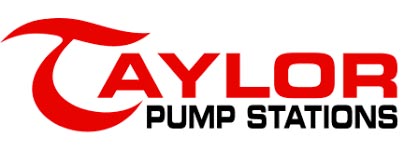“See you at the Station”
“Controlling the liquid limit in the packaged sewer lift station”
What’s down below can hurt you or the environment that surrounds the Packaged Sanitary Lift Station if your liquid monitoring equipment doesn’t function properly. Monitoring the waste water in Packaged Sewage Lift Station is becoming one of the more simplified tasks that are left to electronic measuring devices. Let’s look at some of your options on keeping an eye on the liquid level in your Packaged Sewer Lift Station. Monitoring and control of the liquid waste can be as simple as a magnetic float switch as a high level alarm and it also functions as a pump control switch. “What Floats Your Switch” is cause for alarm, no I mean literally, it can cause an alarm condition .We are going to move to other technology that monitors the waste water limit and leave the float switch, “hanging” for the moment, which is a play on words relating to the negative of floats hanging up at times.
“Advanced controls for the advanced Packaged Sewer Lift Station”
Keeping guard on the level of the sewage in the Packaged Sewer Lift Station is usually performed by a hybrid system where both magnetic float switches and ultrasonic level transmitters are employed to regulate the level of the sewage and supply the owner with high and low level liquid alarms. Technology is optimized in the liquid level control applications and in the overall Packaged Lift Station when the design engineer confers with the owner to gain ample knowledge of their needs and budget.
“A Blog about Logging the Level of the liquid in your Packaged Sewer Lift Station”
Let’s look at the most common liquid measuring devices in the market today t for monitoring sewage waste in a Packaged Sewer Lift Stations. We have already touched on the simple control switch, the magnetic reed type switch .This sensor in the form of a resilient and plastic molded ball floats on the water surface and opens or closes in relation to the water level rising and falling. As simple as float sensors are, they cause many pumps to fail prematurely as they can “rag-up” and can create a continuous run of the pumps condition which can lead to early failure of pump motor.
The ultrasonic detection technology is another form of sensor. These devices use a transducer with send and receive capability. Because the speed of sound travels at 1081 ft./per. Sec. we can easily determine the time it takes a pulse of sound to travel through air and then is profiled into the sensor.
The negative aspect of the ultrasonic sensor is they are relative expensive and in sewage wet wells obstructions are plentiful making for a clear space in front of the sensor nearly impossible.
Submersible transmitters, use the hydrostatic pressures created at the bottom of the packaged lift station to indicate the level of liquid. The technology in the Submersible level transmitters uses 4-20mA , analog signal output related to a fixed level range that when combined with a tube to the surface compensates for barometric pressure .
The downside to the Submersible Transmitters in Packaged Sewer lift Stations is some designs need occasional cleaning.
Whatever liquid level measurement technology you choose for your new Packaged Sewer Lift insure that it has smart technology behind it and consult with the integrator to insure it works well with your PLC and pump control devices. So whether you prefer a simple float switch arrangement or microwave, water pressure, (hydrostatic) or submersible transducer level monitoring, look at the overall cost but go for quality and what will give reliable service for your next Packaged Sewer Lift Station. For reliable information on Packaged Sewer Lift Station we’ll see you at the station, next week!



